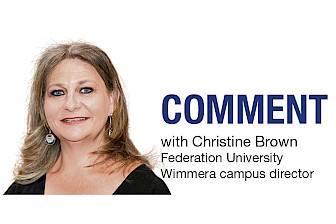Debate has centred on a proposal to overcome various tyranny-of-distance shortcomings in the Wimmera by creating a large western Victorian health body.
The idea is that this body would have an in-built formal conduit from the Wimmera to Ballarat, where a large and growing population, by sheer weight of numbers, guarantees service provision and extension into the state’s west.
The trouble is, and many Wimmera people know it through past experience, that there can be a significant difference between what’s good in theory and what happens in reality – especially when politics hover menacingly in the background.
Arguments and assurances put forward by the leaders of the four respective health-service boards involved in the merger are compelling.
But so too are positions of people worried that a merger involving Ballarat would represent more of an erosion than a building of regional growth potential.
Depending on perspectives, much of the merger idea theoretically makes sense. Formally strengthening services through a collective to ensure the betterment of all, regardless of where you live or what you need health-wise makes a lot of sense.
But what would it all really look like on the ground and where would it ultimately lead, especially when looking beyond health services to an overall socio-economic point of view? Health-care groups after all, with their considerable work forces and connective social networks, are major economic drivers in their own right.
We’re confronted with basic different points of view. Would or wouldn’t a merger work in solving health-service shortfalls in the region? And just how would it affect everything else?
Regardless of health-service community-engagement efforts, many in the street remain unconvinced and are unwilling to simply bank on trust.
It is something Wimmera Southern Mallee Regional Partnership chairman David Jochinke has identified.
He wants greater access to the finer details of the merger, such as a business case and processes involved, to inform judgement calls.
People can also provide an update on their basic thoughts through a snap ‘temperature check’ survey – see page 1.
Ultimately, we in the Wimmera should never have been in a situation
where some of us have felt a serious need to tap into Ballarat for help.
The whole issue is smeared with government neglect and the truth is we shouldn’t be surprised we struggle to attract health professionals and specialists to our region.
After all, we can’t even get an appropriate domestic passenger train for most of the region.
Getting the health-provision formula right is critical for everyone living in the Wimmera.
Wimmera Health Care Group board chair Marie Aitken is right in one of her assessments – that figures showing Wimmera people with higher cases of untreated diseases such as cancers and diabetes than other parts of the state are unacceptable.
RELATED: ‘Show us details’ on hospital merger plan
RELATED: Hospital chiefs provide merger assurances
RELATED: Kealy says no to hospital merger
LETTER: Tick the box exercise






